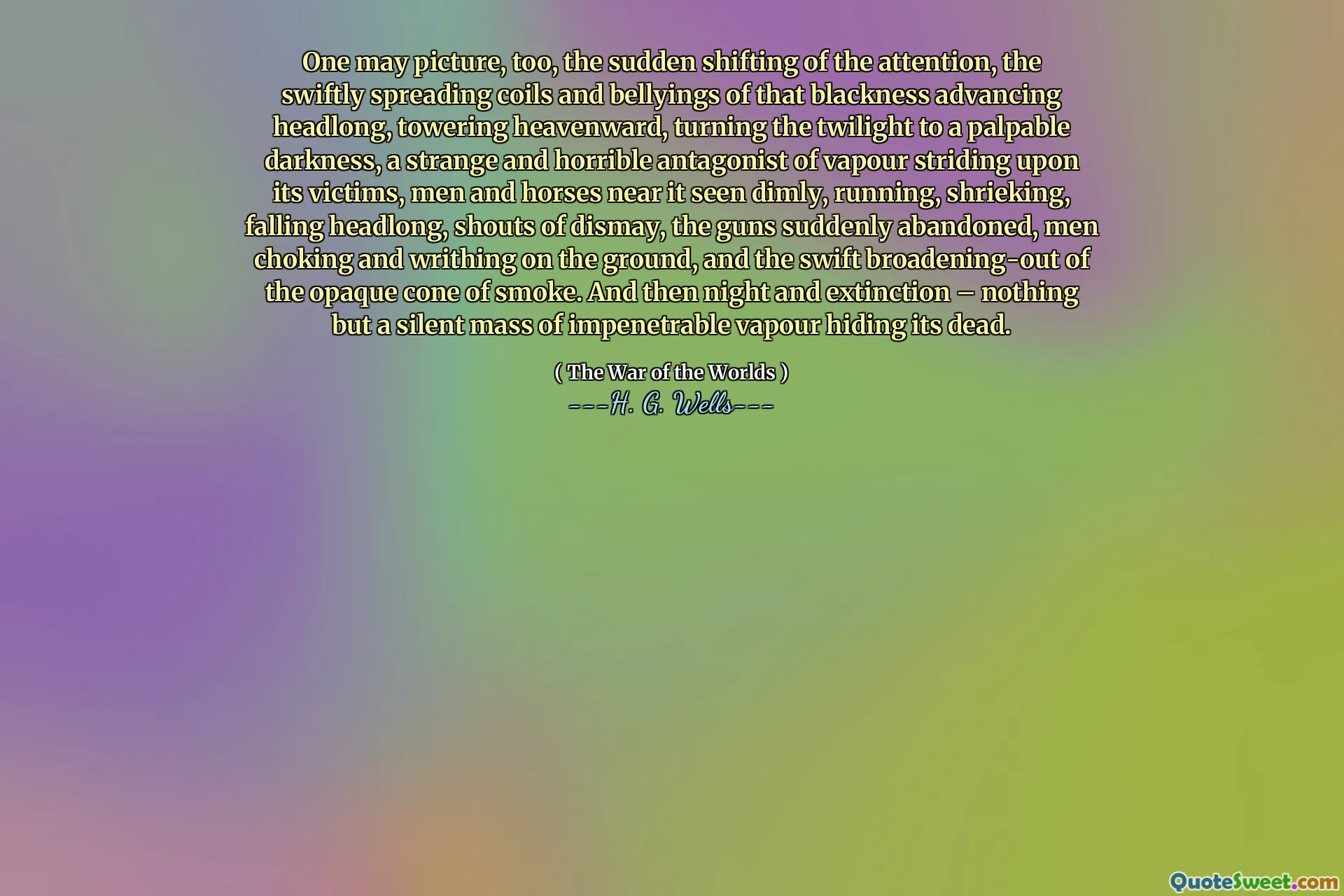
One may picture, too, the sudden shifting of the attention, the swiftly spreading coils and bellyings of that blackness advancing headlong, towering heavenward, turning the twilight to a palpable darkness, a strange and horrible antagonist of vapour striding upon its victims, men and horses near it seen dimly, running, shrieking, falling headlong, shouts of dismay, the guns suddenly abandoned, men choking and writhing on the ground, and the swift broadening-out of the opaque cone of smoke. And then night and extinction – nothing but a silent mass of impenetrable vapour hiding its dead.
The vivid imagery evokes a scene of chaos as blackness envelops everything in its path, transforming the twilight into an overwhelming darkness. The advancing shadow appears as a monstrous force, striking fear into those caught in its wake. People and horses are depicted as mere silhouettes, panicking and falling, all amid the clamor of distress and the relinquishing of their weapons. This portrayal captures the panic and helplessness experienced in such dire circumstances.
As the scene intensifies, the dense smoke expands, creating a suffocating environment. It symbolizes the annihilation and despair of those trapped within it, ultimately leading to an eerie silence filled with loss. The passage illustrates a stark moment of transition from life to death, highlighting the devastations of war and the obliteration of existence under the weight of an impenetrable fog.






